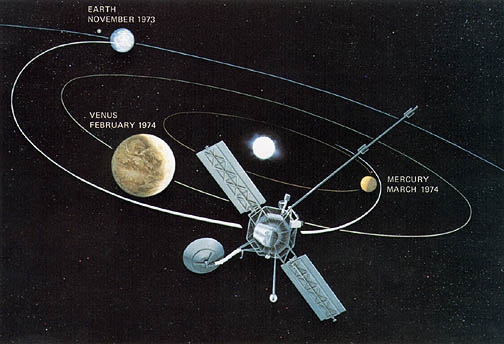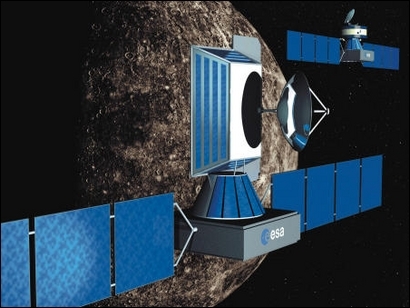The exploration of Mercury
At best, it rises 2¼ hours before the Sun and sets 2¼ hours after it, so always appears just above the horizon, bathed in the light of dawn or dusk. Even the Hubble Space Telescope cannot be trained on a point so near the Sun, which explains why little was known about Mercury prior to the first space mission, and why it remains the least explored planet in our solar system after Pluto.

In 1974 and 1975, the US probe Mariner 10 made 3 flybys of Mercury and at one point was just 327 kilometres away. It took numerous measurements of its temperature and magnetic field, as well as some 4,000 close-up shots with an accuracy of 1 to 2 kilometres. These photographs cover nearly half the planet’s surface, including much of the side normally hidden from us.

|
More about...
More information
Solar System Guide, University of Texas McDonald Observatory
Mercury Fact Sheet, National Space Science Data Center (NASA)
Solar System exploration, NASA website
Planetary photojournal - NASA website
CNES Youth/Education site
Educnet: new information and communication technologies in teaching